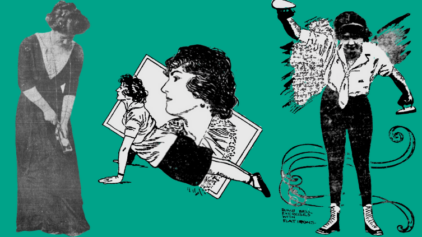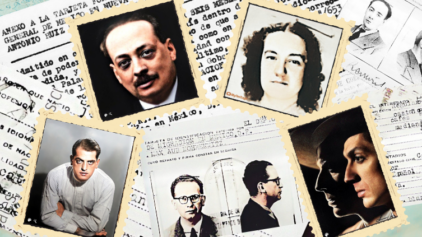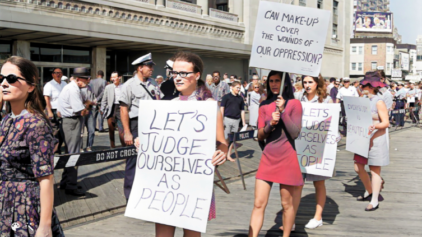

Over the past several months, it’s become clear that the coronavirus pandemic will change our lives in many ways — not least of which, the way we connect to our loved ones. Experts say that social distancing is the only effective weapon humanity has right now to slow the spread of the pandemic. In many places all over the world, leaders have called on their citizens to express their love for others in a way that is the complete opposite of what we are used to: instead of increasing our physical closeness, we’re supposed to stay away from each other and avoid contact, including hugging and kissing.
Kissing is one of the most common ways humans show affection for each other. Norms differ from culture to culture: in some places, friends kiss each other as a greeting, whereas in other places, kisses are reserved for lovers and close family members. Throughout history, people have kissed the hands or feet of their leaders and elders to show respect, and this is still practiced in some parts of the world. Whatever the norms, the gesture is a universal expression of love and admiration.
Unfortunately, kissing is also one of the most surefire ways of spreading infection.
So what does it mean to outlaw kissing as a way to protect our loved ones from the virus?
We are not the first generation to cope with this dilemma. The MyHeritage Research team dug into the digital archives, including our extensive collection of historical newspapers, to learn how people related to kissing during the Spanish flu pandemic 102 years ago. Just like today, social distancing was key to fighting the spread of the disease, and people were forced to take a new attitude towards kissing.
Here are the team’s findings:
Stop kissing already
By January 1919, it had become abundantly clear that kissing was “no laughing matter.”
This piece from The Seattle Star describes a cartoon making light out of the flu, and goes on to say that people also laughed at the idea that kissing spread the disease. “Now people know kissing is no laughing matter in a ‘flu’ epidemic,” it says. “Neither is the ‘flu.’”
Indeed, the tone of some articles calling on citizens to stop “unnecessary kissing” was anything but light:
The above article from the Daily News in Perth, Washington, takes particular aim at women, “who peck each other’s cheek in promiscuous spots, while oftentimes their hearts are hard within them.”
“A kiss should be a sacred rite, only indulged in between people who have for each other a deep and real love,” it says. “Let us at least practise care and refrain from that effusive and generally totally unnecessary kissing which is practised in daily by a multitude of people… Let us at this trying time plump for sanitation, and let sentiment take care of itself… The public should take a firm stand, at least until this devastating epidemic is over, and be contented with a hand-shake and thus avoid the risk of passing from lip to lip the germs of ‘flu.’”
It’s interesting to note that in our time, hand-shaking has also been strongly discouraged, as hand-to-hand contact is also a major risk factor. Instead, leaders have urged people to bump elbows or bow to each other without contact. The “Wuhan shake” — a greeting that involves tapping feet against each other — even emerged in China as a result of these measures.
This article from the Asbury Park Press called kissing an “unhealthy habit”: “The often repeated danger of transmitting disease by the practice of kissing should be heeded for the sake of helpless babies and little children… Suppose for humanity’s sake we all have a care for ourselves as well as our neighbor and stop this unhealthy habit… to be on the safe side stop kissing at once.”
Some, however, dismissed these warnings — including local leaders such as Cincinnati mayor John Galvin:
“There being no ‘anti-kissing’ ordinance in Cincinnati, Mayor John Galvin, addressing 800 returned Ohio troops, said: ‘We will now give you an opportunity to kiss your sisters. Of course, if it doesn’t happen to be your sister, er — well, we will look the other way. There is no ‘anti-kissing’ ordinance and if there was, er — the Mayor is not disposed at this time to think it would be enforced.”
In our day, as well, there have been local leaders who have shrugged off the dangers of social gatherings and social closeness.
The kissing screen
As awareness of germ theory grew, people began to understand that disease could be spread through kissing. Almost a decade before the Spanish flu broke out, a product called an “osculatory screen” was approved by the National Pharmaceutical Society:
The screen was “designed to render the kiss hygienic and safeguard lovers from the danger of germs,” claims this 1910 article from the Oakland Tribune. It describes the screen as “disinfected silk gauze through which the kiss is accomplished, the gauze being held in an ivory frame and placed between the two pairs of lips before they meet.”
The product also appeared in The Oklahoma News in 1912:
Little did they know, this device would have particular relevance several years later. In February 1920, Popular Science Monthly ran an article about it as well:
“Scientists warn us that kisses are unhygienic — transmitting all sorts of dangerous disease germs,” it reads. “Most of us are willing to run this risk, but there are always a few careful ones who strive after the pure and perfect kiss. One of them has invented this kissing screen, which might easily be used as a pin-point racket in its idle moments.” Good to know it was multi-purpose!
Of course, we know now that a screen like this would be useless, even if the “antiseptic” the netting was supposedly covered with was effective. Germs are spread not only through the mouth, but through the nose, too. It seems that many in our day have not internalized this, however, since it is still common to see people wearing masks that cover only the mouth and not the nose.
From Denmark to Mexico
The United States was not the only place where people were dealing with the problem of kissing — just like it is a global issue today. The MyHeritage Research team also found some articles from newspapers in other countries weighing in on the matter.
This article from a Danish newspaper, Middelfart Avis, published December 8, 1918, is titled “Dangerous kisses.” It discusses how critical it is to avoid kissing, bringing an example of a ship from Spain that brought the fever to the coast of Florida. Crew members were forbidden from going ashore, but one man snuck out to meet his girlfriend in the town. A few days later, she got the flu, and 200 of the town’s 1,500 people ended up dying from it.
El Nacional, a Mexican newspaper, ran a front-page article titled “Cómo combatir la Influenza” (“How to Fight the Influenza”). It listed 13 measures that would help stop the spread of the virus, and item number 4 reads: “The greeting, which between men is shaking hands and between women is with a kiss, is a very effective way of transmitting the microbe. Adopt a hygienic greeting.”
A world without kissing
How do we cope in a world without kissing? A world where we can’t express our love and affection for one another in such a natural and human way?
There’s no doubt that this and the other social distancing restrictions are difficult for many, especially those of us who are relatively isolated and don’t live in the same household as our loved ones. Humans are a creative species and we have come up with many ingenious ways to connect despite the distance. But nothing can truly replace being able to touch, hold, and kiss the people we love.
While we wait for this difficult time to pass, we can at least draw comfort from the fact that people all over the world dealt with these same restrictions a century ago, and though it was surely hard for them — it didn’t last forever. Things went back to normal after a few years. And they didn’t have the technology and advanced medicine we have today.
Learn more about drawing comfort and inspiration from the stories of our ancestors in our earlier blog post, Drawing on Your Ancestors’ Resilience Can Help You Get Through Tough Times.
You can also find fascinating stories about your own ancestors in our newspaper collection.
The featured image at the top of this blog post has been provided by the City of Dublin, California – Heritage Parks and Museums.


















